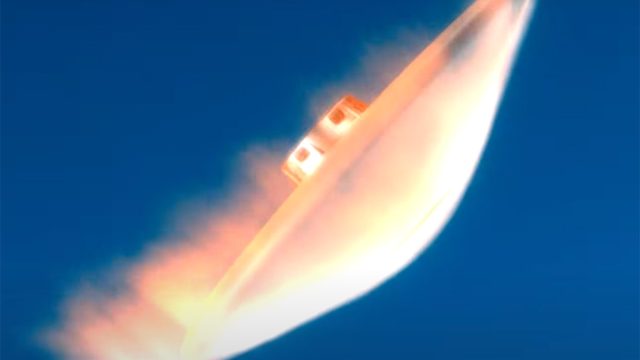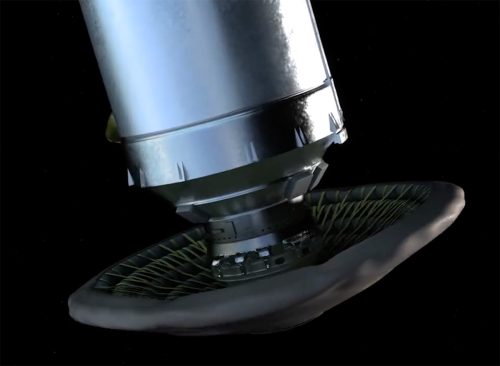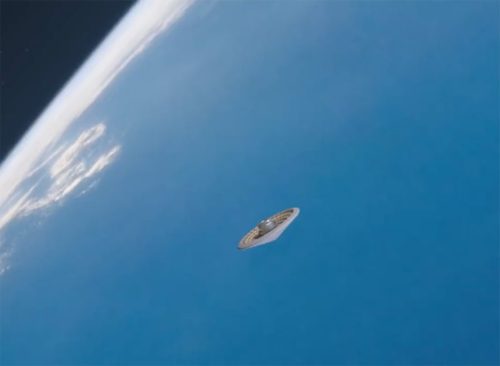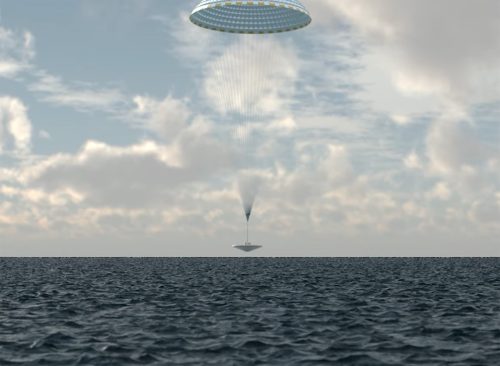The Real Reason Why NASA Will Launch a Huge Flying Saucer Next Month
Agency plans to test a giant disc in November.

Last month, NASA drove a spacecraft into an asteroid in the hopes of one day protecting the Earth from the premise of Armageddon. Next month, the space agency is planning to launch a gigantic flying saucer, but it’s not to shield the planet from space invaders. Read on to find out what’s behind the launch, how it will work, and why it could change space exploration forever.

On Nov. 1, NASA plans to launch the Low-Earth Orbit Flight Test of an Inflatable Decelerator (LOFTID), a giant disc that will travel into low earth orbit, inflate, then descend back to earth. It’s a heat shield intended to slow a spacecraft enough to survive entry into another planet’s atmosphere. Scientists hope it could someday allow humans to land on Mars. Keep reading to learn more and see the video.

Landing a heavy spacecraft—as weighty as one containing humans has to be—is a challenge on planets that have atmospheres, such as Mars. The thickness of the air in a planet’s atmosphere helps slow down an aircraft. But Mars’ atmosphere is much thinner than that of Earth. “The atmosphere is thick enough to provide some drag, but too thin to decelerate the spacecraft as quickly as it would in Earth’s atmosphere,” says NASA. A simple parachute, like the one employed by NASA’s unmanned Perseverance rover that landed on Mars last year, would be too weak to slow down a heavy manned craft.

But NASA believes an “inflatable aeroshell” launched ahead of the craft might provide the solution. The heat shield could act, essentially, as a giant brake. Twenty feet in diameter, LOFTID would be deployed as a craft approaches a planet, allowing it to decelerate and protecting it from atmospheric heat. “This technology enables a variety of proposed NASA missions to destinations such as Mars, Venus, Titan as well as return to Earth,” the agency says.

On Nov. 1, NASA will try its first deployment of LOFTID, which will be launched on an Atlas V rocket. A successful launch could help the agency realize its goal of landing humans on Mars in the next decade. “This technology could support landing crew and large robotic missions on Mars, as well as returning heavier payloads to Earth,” said the agency.

In June, NASA inflated a test version of LOFTID on Earth and published video of the shield, along with animations of what it would look like when deployed above other planets. In late September, the agency published a longer 90-second animation that shows, step-by-step, how LOFTID is intended to work during its test in low Earth orbit, from launch, to re-entry into the Earth’s atmosphere, to splashdown. Watch videos here and here.
LOFTID, @NASA‘s Low Earth Orbit Test of an Inflatable Decelerator, was inflated for the last time on Earth this week. Its next stop? Space!
Learn more about how LOFTID could take us to Mars here: https://t.co/3dWVkSoi3j pic.twitter.com/XoPgIf5Y8Q
— NASA Langley Research Center (@NASA_Langley) June 15, 2022














